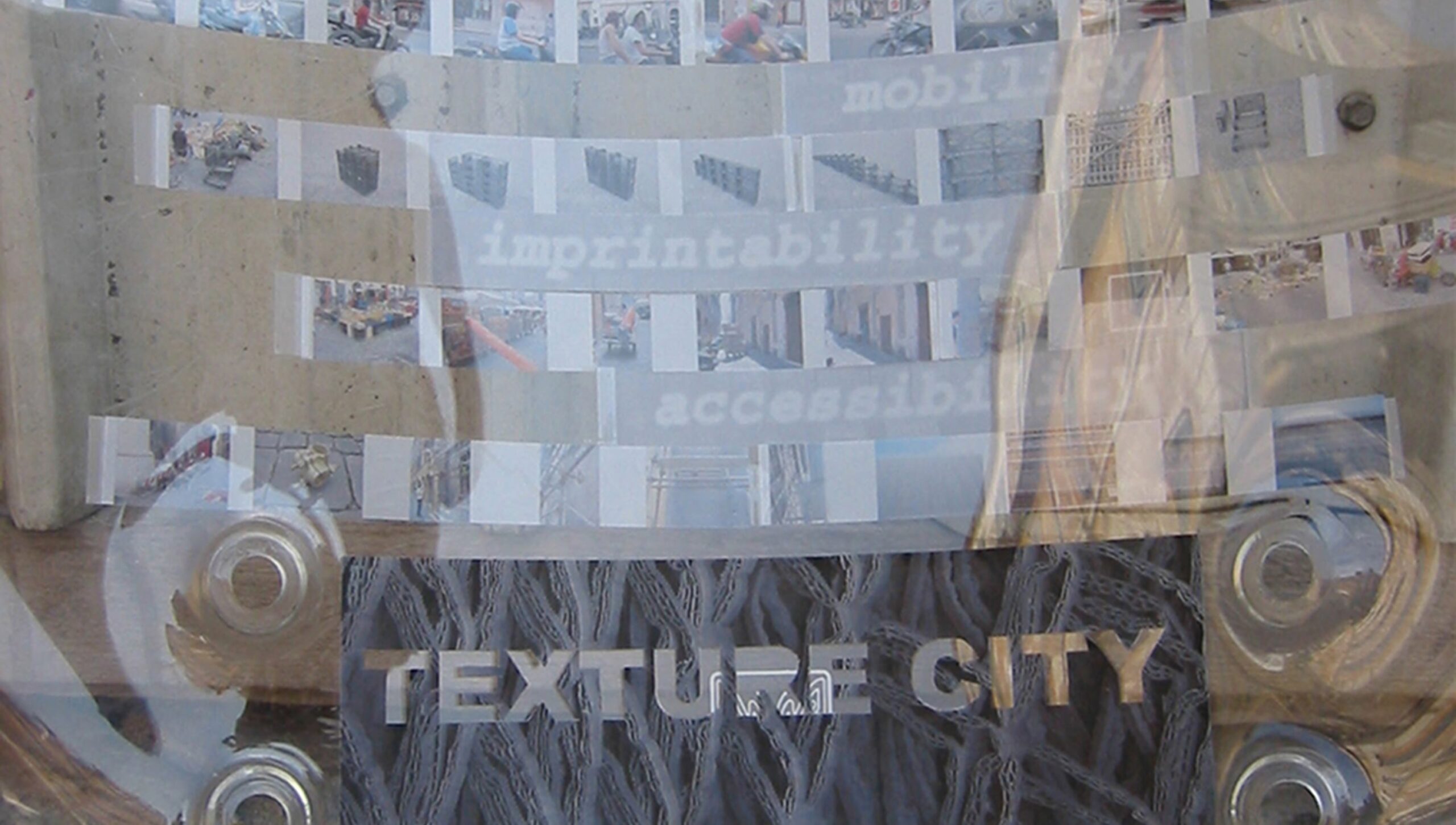
Texture City is an interactive installation that focuses on the city as a process, as a verb. It is an investigation that is interested in those phenomena that exist at the intersection between the transience of peoples’ lives and the permanence of the city. Emerging out of the sensibility that is created as one moves from being a voyeur to a participant in the city, the design develops themes that discuss temporality and public engagement as fundamental qualities of the city. This focus on the city as temporal public infrastructure conditions both the design of the installation and the intentions of the architectural and urban proposals presented within the installation’s armature.
The installation consists of three, three-dimensional units that are in part containers (for models, found objects, drawings, images and text collected and/or constructed during the Prix de Rome study in Rome), and receivers and projectors (for video and sound). Participants navigating the installation become active agents in the unfolding of the installation’s ideas. Their movement is traced through projections from the units that collapse their presence into image fragments from different public spaces in Rome. Continuous sound loops evoke the transformations evident in the occupation of the public realm over seasonal and diurnal changes. The installation is conceived as an interactive and participatory space, and is therefore designed to be tuned to the different spaces it occupies.
Texture City is an interactive installation that focuses on the city as a process, as a verb. It is an investigation that is interested in those phenomena that exist at the intersection between the transience of peoples’ lives and the permanence of the city. Emerging out of the sensibility that is created as one moves from being a voyeur to a participant in the city, the design develops themes that discuss temporality and public engagement as fundamental qualities of the city. This focus on the city as temporal public infrastructure conditions both the design of the installation and the intentions of the architectural and urban proposals presented within the installation’s armature.
The installation consists of three, three-dimensional units that are in part containers (for models, found objects, drawings, images and text collected and/or constructed during the Prix de Rome study in Rome), and receivers and projectors (for video and sound). Participants navigating the installation become active agents in the unfolding of the installation’s ideas. Their movement is traced through projections from the units that collapse their presence into image fragments from different public spaces in Rome. Continuous sound loops evoke the transformations evident in the occupation of the public realm over seasonal and diurnal changes. The installation is conceived as an interactive and participatory space, and is therefore designed to be tuned to the different spaces it occupies.
